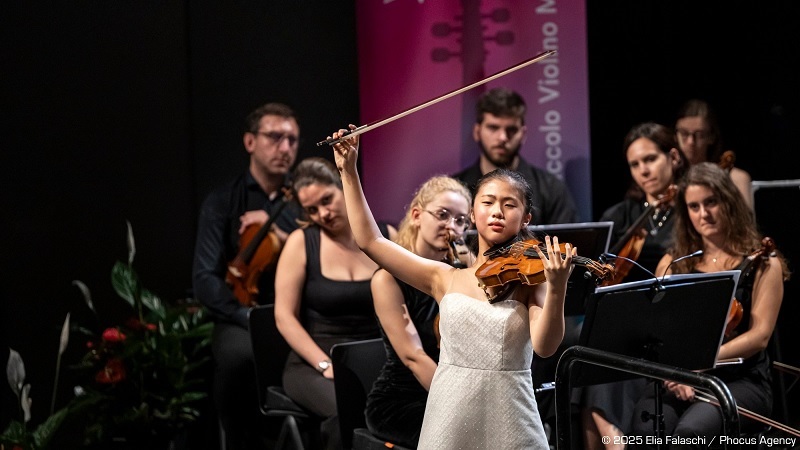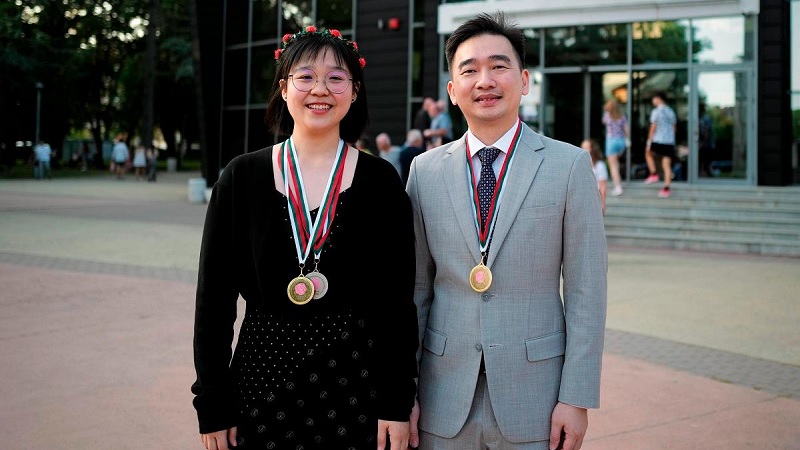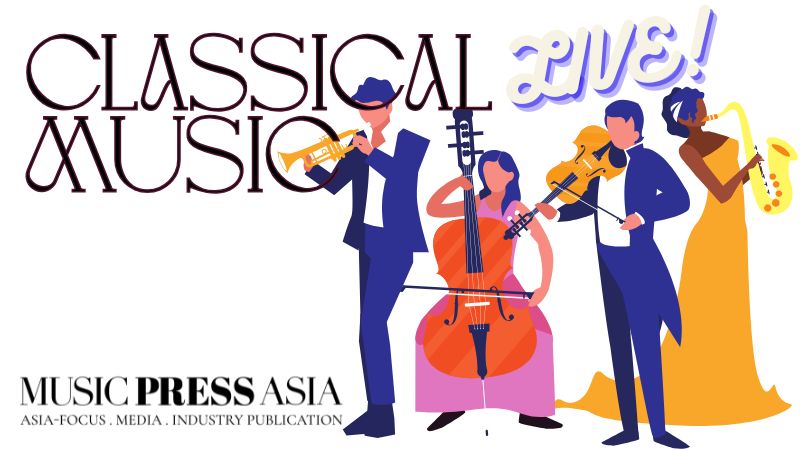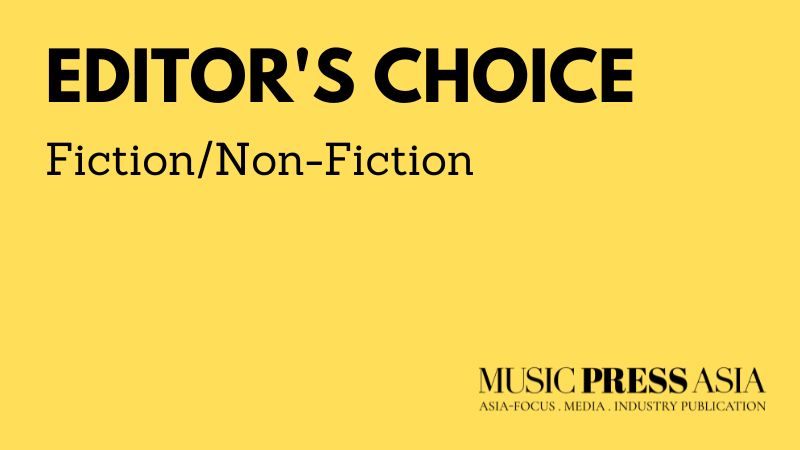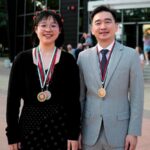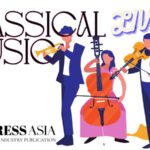Siam Sinfonietta’s Triumphant Performance at Kuala Lumpur’s Festival Orkestra 2025
Maestro Somtow Sucharitkul, with his characteristic blend of artistic vision and inspiring leadership, guided the Siam Sinfonietta to resounding triumphs at their recent performance during Kuala Lumpur’s Festival Orkestra 2025.
Maestro Somtow Sucharitkul, with his characteristic blend of artistic vision and inspiring leadership, guided the Siam Sinfonietta to resounding triumphs at their recent performance during Kuala Lumpur’s Festival Orkestra 2025.
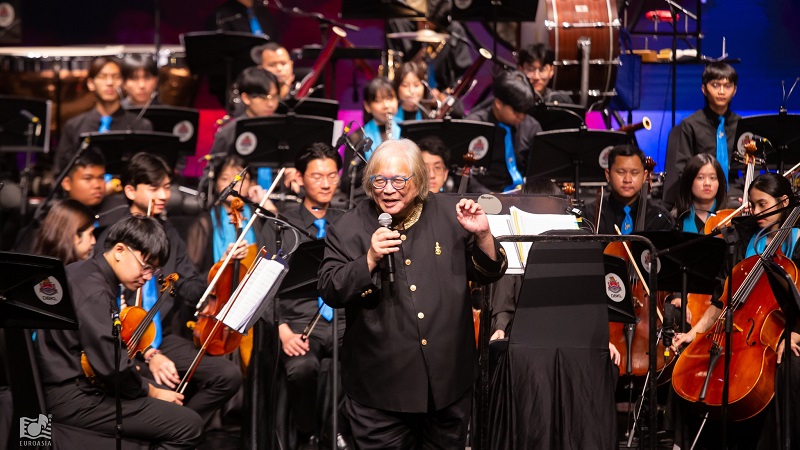
Amidst the vibrant cultural tapestry woven by DBKL’s recent orchestra festival, spanning from 31 May to 29 June, a particular hue of passion emerged with the concert aptly titled ‘Colours of Passion’. The evening’s grand unveiling saw the arrival of Thailand’s prodigious Siam Sinfonietta youth orchestra, under the masterful baton of Maestro Somtow Sucharitkul, a figure whose artistry is a source of immense national pride.
This significant cultural exchange, a testament to the collaborative spirit between the Mayor’s office of Kuala Lumpur (DBKL), Euroasia Association of Performing Arts, and Siam Sinfonietta, set the stage for an evening of audacious musical exploration.
A highlight of the evening was the world premiere of Plan Nine from Outer Space, a compelling orchestral adaptation derived from Maestro Somtow Sucharitkul’s earlier operatic reimagining of the cinematic work. This ambitious project, previously celebrated for its unique score and innovative theatricality at its premiere at the Oldenburg Film Festival in Germany, showcases the Siam Sinfonietta’s remarkable ability to infuse a familiar narrative with fresh artistic life.

The orchestration thoughtfully integrates distinctive elements, such as the evocative sounds of police sirens and a telephone, transforming them into integral components of the musical landscape. This adaptation respectfully re-envisions its source material as a work of contemporary art, embracing its legacy while elevating it through sophisticated musical interpretation. The poignant wailing vampire section was brought to life with profound expressiveness by mezzo-soprano Siriwattanakamol Kridhima, adding a rich vocal dimension to this innovative suite.
While I haven’t seen the film, the composition struck me with the same feeling I had when I first heard John Williams’ iconic theme for the Star Wars Skywalker saga—the soaring sensation of space, the vastness of infinity, and the wonder it evokes. For a brief moment, I was also reminded of another sci-fi masterpiece: Stanley Kubrick’s 2001: A Space Odyssey, which left me with the same lingering awe. For over 20 minutes, I felt awake in a dream. In the blink of an eye, the music was over. Even with moments of repetition, the music held me in its spell.
Between Wit & Revolution: The Spirit of Symphony No. 2
Beethoven’s Symphony No. 2 in D major, Op. 36, often stands in the shadow of its more revolutionary successors, yet it is a work of immense charm, wit, and burgeoning genius. Far from being merely a bridge to the ‘Eroica’, it is a complete and captivating statement in its own right, brimming with classical elegance while hinting at the dramatic upheavals to come. Composed during a period of profound personal crisis for Beethoven, as his deafness became undeniably apparent, yet paradoxically, it radiates an almost defiant optimism and effervescence. This symphony is a testament to the composer’s indomitable spirit, finding joy and robust energy even amidst profound inner turmoil.
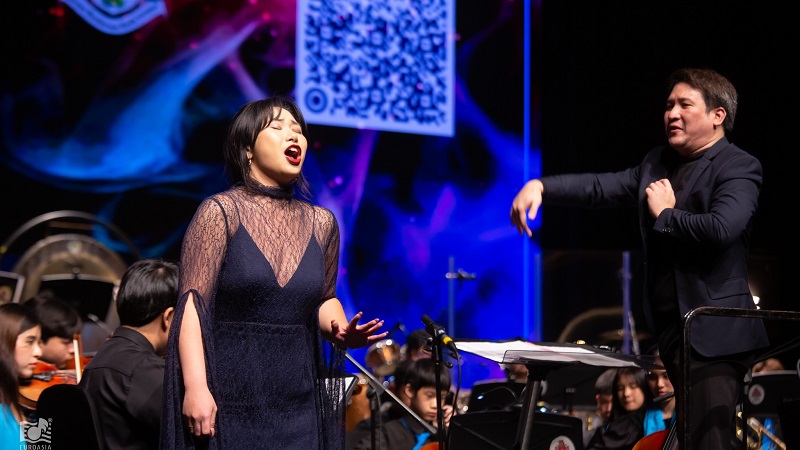
“Just as how my opera ‘Plan Nine from Outer Space’ has shown us, we must have dreams and aspirations despite not having been blessed with the ability to fulfil them,” said Somtow Sucharitkul.
The Siam Sinfonietta’s interpretation of this masterpiece was nothing short of revelatory. They truly embraced the symphony’s dual nature, showcasing its classical grace while allowing its inherent power and humour to shine through. The opening Adagio molto – Allegro con brio immediately set a vibrant tone, with the orchestra’s collective energy palpable. The famous, sprightly main theme of the Allegro was delivered with remarkable clarity and precision by the woodwind section — their playful exchanges between oboe, clarinet, and flute adding a delightful sparkle. The strings, in turn, provided a rich, unified foundation, executing the rapid scales and driving rhythms with an impressive blend of agility and warmth, particularly in the surging passages that underpin the movement’s dramatic development.

The lyrical beauty of the Larghetto was rendered with exquisite sensitivity. Here, the strings truly excelled, their sustained, singing lines creating a tapestry of serene introspection. The interplay between the first and second violins was particularly nuanced, conveying a tender dialogue that felt deeply personal.
The woodwinds offered beautifully voiced counter-melodies and delicate filigree, adding layers of colour and emotional depth without ever overshadowing the primary melodic material. This movement, often cited for its idyllic charm, was given a profound sense of peace and contemplative beauty by the young musicians.
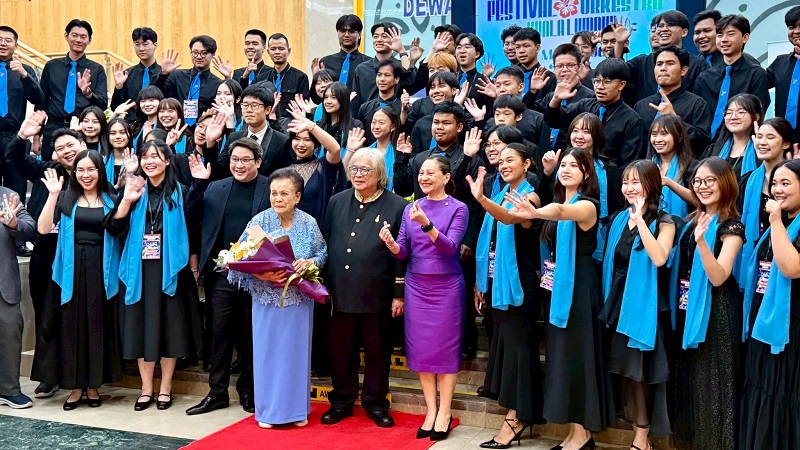
The Scherzo: Allegro burst forth with mischievous energy, its abrupt dynamic shifts and syncopated rhythms handled with infectious enthusiasm. The woodwinds were again a highlight, delivering their punchy, staccato figures with crisp articulation, while the strings navigated the rapid, often humorous, shifts in texture with admirable cohesion.
Finally, the concluding Allegro molto was a whirlwind of joyous exuberance. The famous, almost relentless, driving energy of the finale was maintained with unwavering momentum, the strings unleashing a torrent of brilliant passagework, and the woodwinds contributing their bright, incisive accents. The Siam Sinfonietta’s performance underscored the symphony’s triumphant spirit, leaving the audience with an uplifting and deeply satisfying musical experience.
Euroasia Winner Takes Center Stage: A Star Emerges
The evening’s program also included a special performance by the 2024 Euroasia Competition Concerto Prize winner, the exceptionally talented Malaysian violinist Sha Kah Yan. Taking the stage with poised confidence, she performed Camille Saint-Saëns’ Introduction and Rondo Capriccioso, a masterwork revered in the violin repertoire. Sha Kah Yan rose to the challenge with remarkable composure and artistic maturity well beyond her years. Draped in a flowing gown of nightingale blue that shimmered under the stage lights, she maintained an air of serene elegance throughout her performance.
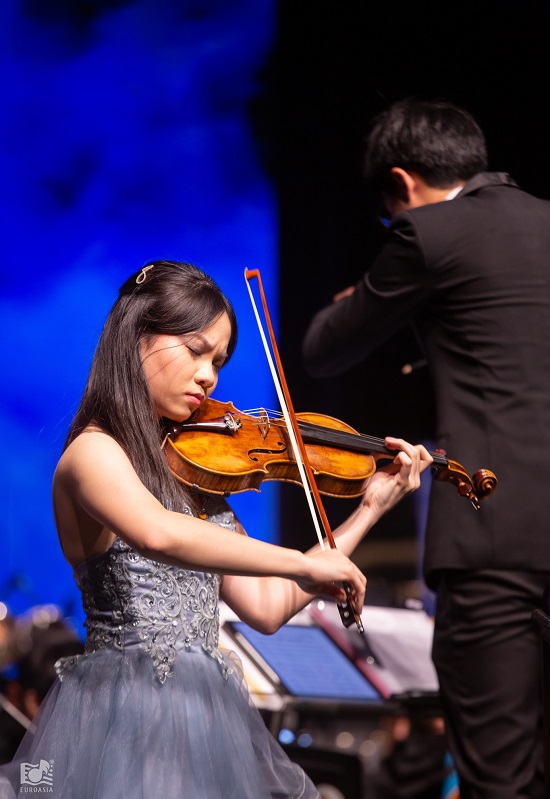
Kah Yan embraced the spotlight with an extraordinary calmness that belied her youth, rising to the formidable musical challenge with a quiet confidence and expressive depth well beyond her years. Wearing a nightingale-blue gown that shimmered subtly beneath the stage lights, she projected an aura of elegant restraint. Yet behind that poise was a clear intensity—her unwavering focus and cool demeanor spoke volumes, suggesting not only technical control but a deep connection to the music that sustained her throughout the performance.
In every sense, Kah Yan displayed the hallmarks of a consummate young artist.
Youth Unleased: The Firebird Reborn
The evening concluded with a performance of Stravinsky’s Firebird Suite (1919), a work that is anything but forgiving. Known for its dazzling orchestration, shifting moods, and rhythmic complexity, Firebird is a formidable challenge—especially for a youth orchestra. Yet Siam Sinfonietta not only accepted that challenge, they transcended it, delivering a performance that raised the bar for young ensembles across Southeast Asia.
Tackling this piece requires more than technical skill; it demands artistic maturity and unwavering focus. Under the dynamic leadership of Maestro Somtow Sucharitkul, the musicians met Stravinsky’s kaleidoscopic score with astonishing confidence. The result was not just a feat of preparation, but a bold and cohesive soundscape that reverberated with power, precision, and daring conviction.
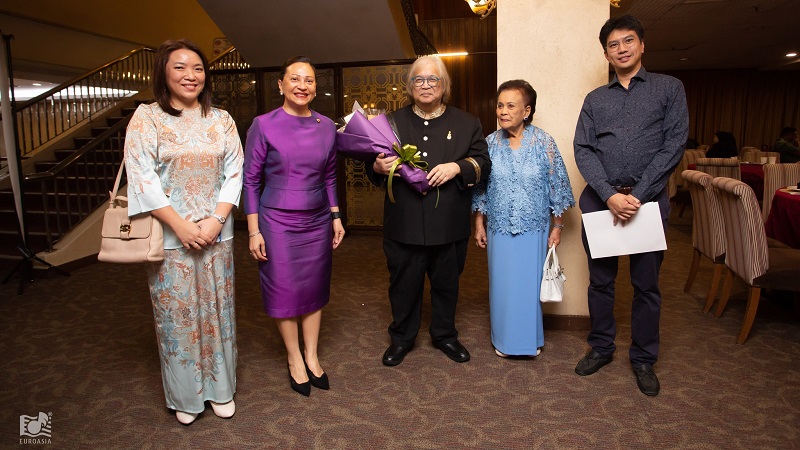
What could a youth orchestra show me that I hadn’t already encountered? Over the years, I’ve attended my fair share of performances, enough to think I had a fair sense of the musical delivery of a youth orchestra. That evening, however, Siam Sinfonietta completely upended them. Their interpretation of Stravinsky wasn’t just impressive—it was revelatory. For the first time, the Firebird Suite sounded startlingly raw and uncompromising, echoing the same seismic energy it must have unleashed in 1919.
This was perhaps unheralded in Bangkok or anywhere in Southeast Asia.

Not Just a School Project: The Genesis of Siam Sinfonietta
What sets the Siam Sinfonietta apart from other youth orchestras is the story of its inception—a story rooted not in institutional mandate, but in the initiative of its young musicians. It was these teenagers themselves who approached Thailand’s National Artist, Somtow Sucharitkul, compelled by a passionate desire to perform what they considered “real music.” For them, that meant immersing themselves in complete orchestral masterpieces, not merely isolated movements—a bold contrast to the more conventional approach found in most school programs. Inspired by what they had seen performed on world stages, they sought the same depth, challenge, and authenticity in their own musical journey. Their ambition became the orchestra’s foundation.
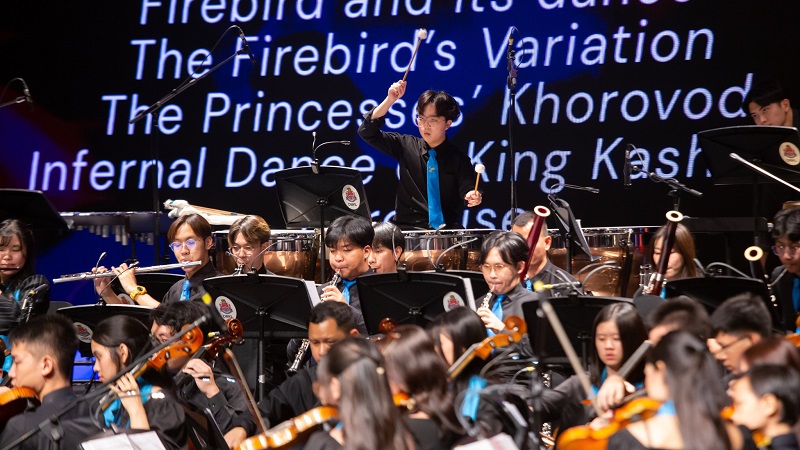
It was also demonstrated that with strong leadership and dedicated musicianship, a youth orchestra can indeed tackle and excel at even the most formidable works in the orchestral repertoire. Siam Sinfonietta is destined to be well remembered, serving as a profound inspiration for all aspiring youth orchestra members. In essence, they have demonstrated the capacity to master the formidable dynamism found within the works of Igor Stravinsky and Ludwig van Beethoven.
The concert was also attended by the royal family of Negeri Sembilan, who are also passionate supporters of classical music. A couple of years ago, the ruler’s son, Prince Zain, even played the harpsichord, performed with the Siam Sinfonietta in Bangkok.
All images are provided courtesy of Euroasia Association of Performing Arts.

